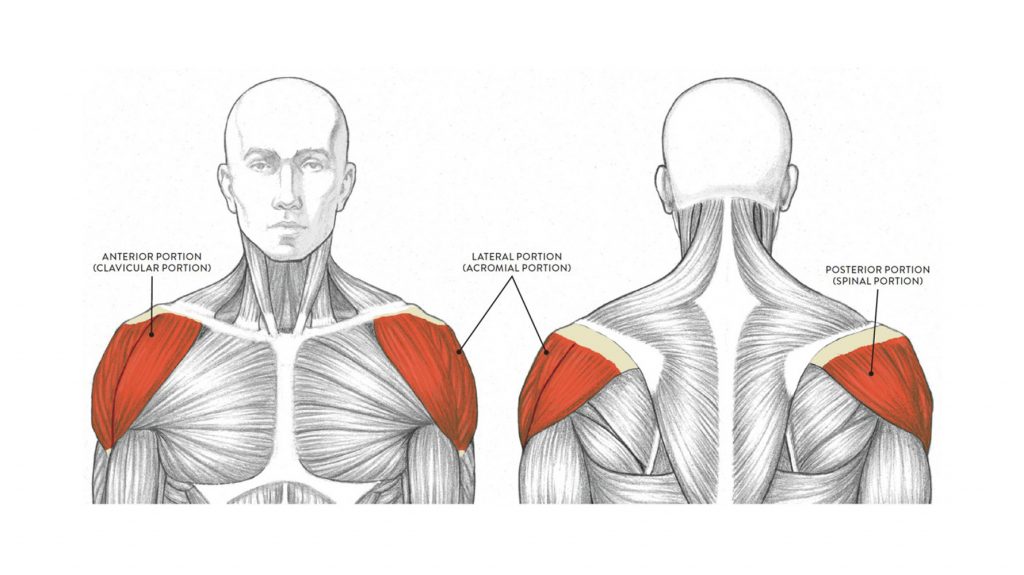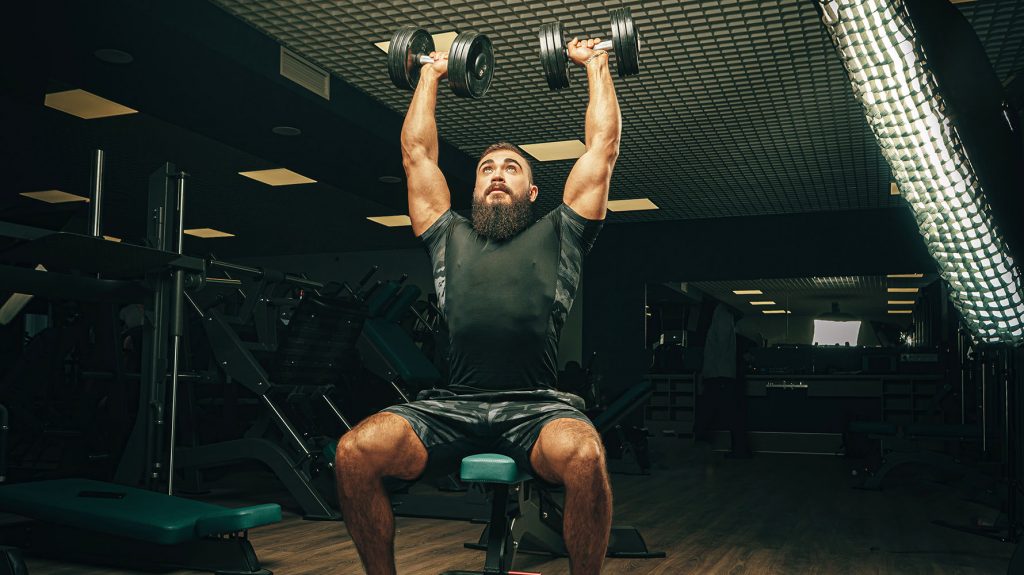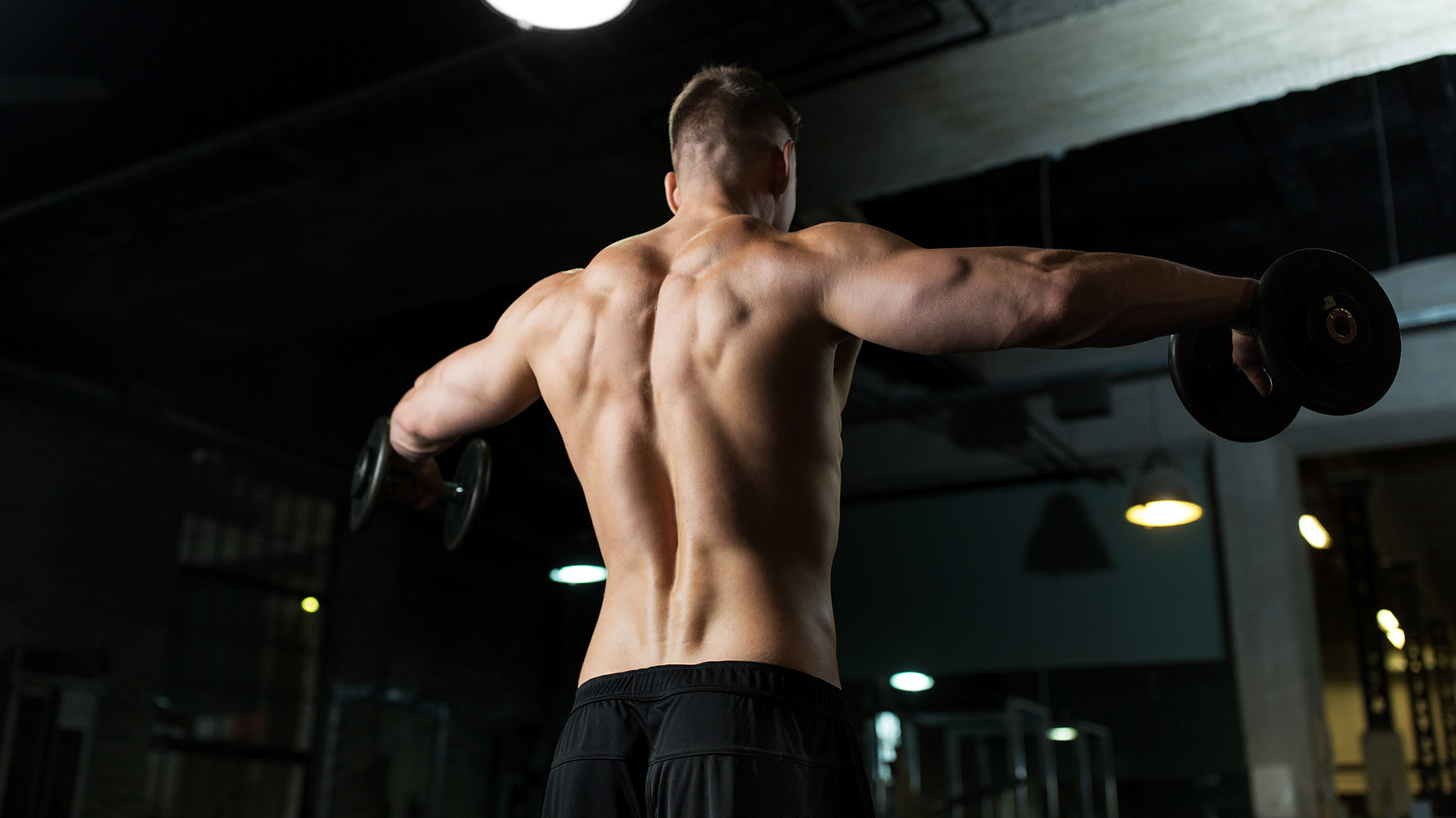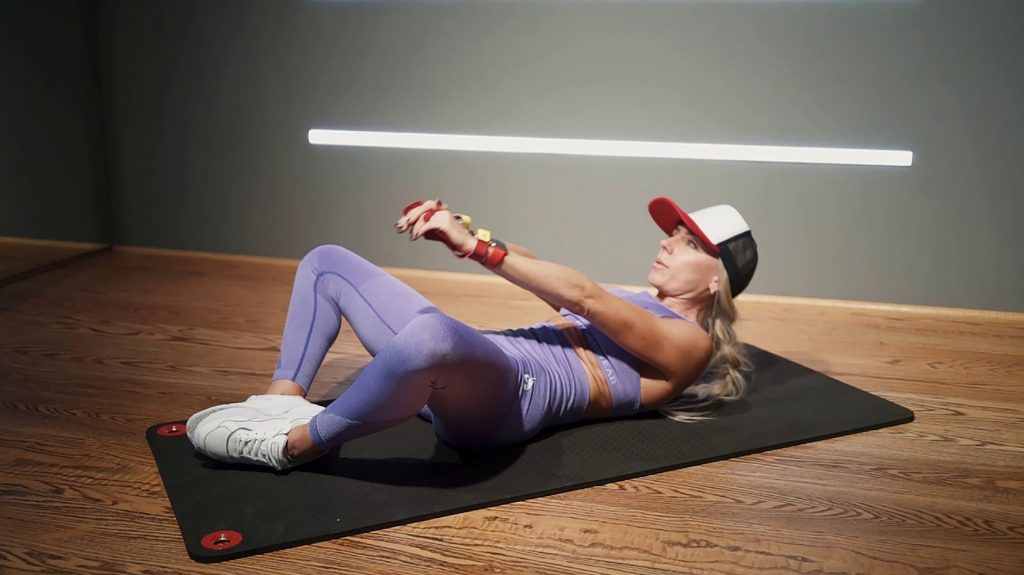Today you will learn how to build up your shoulders. We will show you effective exercises and proviron steroid look at the anatomy of the deltoid muscles.
Massive, well-developed shoulders are the hallmark of any athlete. After all, it is they, in combination with a narrow waist, that create the visual illusion of the power of the torso and the athlete as a whole. Inflated deltoids will be visible both on stage and in everyday life. Even in clothes, the width of your shoulders will not go unnoticed.
The easiest way to change your appearance is to strengthen your shoulder muscles. Developed shoulders will balance out the hips and visually reduce them. If your figure is shaped like an apple or a pear, strong deltoids will help you to look more in proportion. In addition, this muscle group is the most sought after of the muscles in the upper body, as they work with any movement.
Table of Contents
Anatomy of Deltoid Muscle
The deltoid muscles consist of three portions:
- The anterior portion (clavicular portion) is attached to the humerus and is responsible for raising the arm forward.
- The lateral portion (acromial portion) is attached to the acromion of the scapula and allows you to raise your arm to the side.
- The posterior portion (spinal portion) is attached to the scapula and allows the arm to be pulled back.

The deltoid muscle covers the shoulder joint. The muscle is thick and has the shape of a triangle with the base up and the top down. This consists of large muscle bundles, fan-like converging at the apex. It starts from the clavicle and scapula and attaches to the deltoid tuberosity of the humerus.
Features of Shoulder Workout
People often start doing shoulder exercises with too much weight, which affects the execution of the technique. And this is fraught with injuries of the shoulder joint. To tire your shoulder muscles, you don’t need as much weight as used to tire your arms and chest. In most deltoid exercises, you hold the dumbbells at a significant distance from your body, so they feel heavier. To work your muscles properly, start with light dumbbells and increase the weights as you build muscle.
You must be prepared for the fact that you will have to make maximum efforts, as this is a very stubborn muscle group and the training involved should be as varied as possible. Of course, the variety of the training process is important for all muscle groups, but given the complexity of the anatomical structure, it is especially necessary when training the shoulders.
Remember – the main thing is variety! Overuse of the bench press, the main exercise for increasing delta mass, will for most people lead to hypertrophy of only the anterior beam. It is worth remembering that the front deltoids are indirectly involved in almost all upper body exercises. Therefore, the emphasis when training the deltoids, must be shifted towards the development of the posterior beam, so that the development is balanced.
You need to train the shoulders no more than twice a week (for beginner athletes once will be enough), this will allow the muscles to fully recover by the next workout.

17 Best Shoulder Exercises for Mass
These exercises will improve shoulder shape by developing and strengthening the deltoid muscle. But before you start training, you should study the anatomy of the shoulders and the peculiarities of training this muscle group. This will expand your knowledge and allow you to train much more efficiently.
1. Seated Barbell Shoulder Press
In this exercise, the focus is on the anterior head of the deltoid muscle.
Working muscles:
- Rear deltoid
- Trapezius
- Front deltoid
- Triceps
- Upper chest
Exercise technique:
Sit on a bench with your legs wide apart and your feet firmly on the floor. Take a barbell from the racks with a wide grip and lower it to your upper chest. The back and forearms are vertical, the chest and shoulders are straightened, the gaze is directed in front of you. As you exhale, powerfully, but smoothly, straighten your arms, lifting the bar up. While inhaling, slowly, while maintaining control over the apparatus and maintaining the correct trajectory of movement, lower the barbell back down.
Options:
This exercise can be done while standing (military press). Unlike the seated press, this option will work more stabilizer muscles, allowing you to lift more weight on the bar. You can also do this exercise while sitting in the Smith machine.
2. Machine Shoulder Press
In this exercise, the anterior and middle heads of the deltoid muscles receive the main load.
Working muscles:
- Upper chest
- Triceps
- Trapezius
- Front deltoid
- Middle deltoid
Exercise technique:
Sit on the machine and rest your back flat against the seat. The feet rest firmly on the floor. The back is straight, the chest and shoulders are straight and the gaze is directed in front of you. As you exhale, squeeze the handles of the simulator up. While inhaling, return to the starting position.
Options:
In this exercise, two grip options are possible: Neutral (palms facing each other), or top grip (palms facing forward). Depending on the selected grip that is used, you can shift the focus to different muscle parts that are being worked out. With a neutral grip, the front beam is more involved. When using a grip from above, the emphasis is shifted to the lateral bundle of the deltoid muscle.
3. Seated Dumbbell Shoulder Press
One of the most effective deltoid exercises. When it is performed, the anterior and middle heads of the deltoid muscles receive the main load.
Working muscles:
- Triceps
- Trapezius
- Front deltoid
- Middle deltoid
Exercise technique:
Pick up dumbbells and sit on the bench. In the starting position, the dumbbells are at head level, palms facing forward. Inhale and then push the dumbbells over your head. At the top, at the most difficult point, exhale. When lowering the dumbbells to the starting position, take a breath.
Important nuances:
The elbows should be strictly under the hands along the entire range of motion. Do not fully extend your elbows at the top point. Take dumbbells of adequate weight, so that you can perform the exercise correctly, with a good technique.
4. Seated Dumbbell Front Raise
In this exercise, the main load is on the anterior bundle of the deltoid muscle.
Working muscles:
- Front deltoid
- Upper chest
Exercise technique:
Sit on a bench and grab the dumbbells in your hands. In the starting position, the arms are down by your sides. The back is straight. The gaze is directed in front of you. As you exhale, lift the dumbbell in front of you, so that your arms are parallel with the floor. Lower the dumbbell down and repeat the exercise with the other hand.
Options:
This exercise can be performed by lifting dumbbells with both hands at the same time. Also, you can do an exercise with a twist of the hand (while lifting the dumbbells, simultaneously turn your wrists, so that at the top point, your palms are facing downwards).
5. Barbell Front Raise
In this exercise, the main load is on the anterior bundle of the deltoid muscle.
Working muscles:
- Upper chest
- Trapezius
- Middle deltoid
- Front deltoid
Exercise technique:
Take the barbell with an overhead grip and stand straight. In the starting position, the arms with the bar are down. The back is straight. The gaze is directed in front of you. As you exhale, lift the bar in front of you, so that your arms are parallel with the floor. While inhaling, lower the barbell.
Options:
This exercise can also be performed with dumbbells in each hand.
6. Cable One Arm Lateral Raise
In this exercise, the main load is on the anterior bundle of the deltoid muscle.
Working muscles:
- Front deltoid
- Trapezius
- Middle deltoid
Exercise technique:
Take the handle of the lower block and stand with your back to the simulator. In the starting position, the hand holding the handle is down. The back is straight. The gaze is directed in front of you. As you exhale, raise your working hand in front of you, so that your arm is parallel with the floor. While inhaling, return to the starting position.
Options:
This exercise can be performed using dumbbells in your hand, or with a barbell, as seen in the previous exercise, this involves raising both arms at the same time.
7. Standing Dumbbell Lateral Raise
In this exercise, the main load is on the middle bundle of the deltoid muscle.
Working muscles:
- Middle deltoid
- Rear deltoid
- Trapezius
- Supraspinatus muscle
Exercise technique:
Take dumbbells in your hands and stand up straight. In the starting position, the hands are down. The back is straight. The gaze is directed in front of you. As you inhale, raise your arms to the sides until they are parallel to the floor. As you exhale, lower your arms to the starting position.
Tips:
Do not use inertial force, especially lumbar flexion. Perform slow, controlled movements at full amplitude. Don’t round your ribcage. Keep your shoulders straight.
8. Seated Dumbbell Lateral Raise
In this exercise, the main load is on the middle bundle of the deltoid muscle.
Working muscles:
- Trapezius
- Middle deltoid
- Front deltoid
Exercise technique:
Sit on the edge of a bench and pick up your dumbbells. In the starting position, the hands are down. The back is straight. The gaze is directed in front of you. As you inhale, raise your arms to the sides to a horizontal position. As you exhale, lower your arms.
Tips:
Keep your arms slightly bent at the elbows. Don’t round your ribcage. Keep your shoulders straight.
9. Behind the Back Cable Lateral Raise
In this exercise, the main load is on the middle bundle of the deltoid muscle.
Working muscles:
- Middle deltoid
- Rear deltoid
- Trapezius
- Supraspinatus muscle
Exercise technique:
Take the handle of the lower block and stand sideways to the machine. In the starting position, keep your hand down in front of you. The back is straight. The gaze is directed forward. As you exhale, move your working hand to the side, up to shoulder level. While inhaling, return to the starting position.
Options:
You can also do this exercise with a dumbbell in your hand.
10. Lateral Raise Machine
The main load in this exercise falls on the middle bundle of the deltoid muscle. The front head receives additional load.
Working muscles:
- Middle deltoid
- Front deltoid
Exercise technique:
Sit on the machine and rest your back against the seat. Grasp the handles and press your forearms against the pads. In the starting position, the arms are down. As you inhale, raise your arms to shoulder level. As you exhale, return to the starting position.
Options:
This exercise can also be performed by raising your arms one at a time.
11. Barbell Upright Row
The main load in this exercise falls on the middle bundle of the deltoid muscle. The trapezius muscle receives additional load.
Working muscles:
- Trapezius
- Middle deltoid
- Subscapularis
- Rear deltoid
- Supraspinatus
Exercise technique:
Grab the bar with an overhand grip and stand straight. In the starting position, the arms are straightened at the elbows and the bar rests on the hips. Inhale and holding your breath, pull your elbows straight up so that the bar reaches chest height. As you exhale, slowly return to the starting position.
Options:
This exercise can be performed by varying the width of the grip. The wider the grip, the greater the load on the trapezius muscle. The narrower the grip, the greater the load goes to the deltoid muscles.
12. Cable Upright Row
The main load in this exercise falls on the middle bundle of the deltoid muscle. The trapezius muscle receives additional load.
Working muscles:
- Trapezius
- Middle deltoid
Exercise technique:
Grasp the handle of the lower block with both hands and stand straight. In the starting position, the arms are straightened at the elbows and are below. Inhale and holding your breath, pull the handle straight up to your upper chest (just below chin level). As you exhale, slowly return to the starting position.
Options:
This exercise can be performed by varying the width of the grip. The wider the grip, the greater the load on the trapezius muscle. The narrower the grip, the greater the load goes to the deltoid muscles.
13. Dumbbell Bent-Over Lateral Raise
The main load in this exercise falls on the back head of the deltoid muscle.
Working muscles:
- Trapezius
- Subscapularis
- Rear deltoid
- Small round
- Big round
- Diamond-shaped
Exercise technique:
Take dumbbells and bend forward. The legs are slightly bent at the knees. In the starting position, the arms are down. As you exhale, raise your arms to the sides at the same time. While inhaling, return to the starting position.
Important nuances:
Always keep your back straight, slightly arched at the lower back. Even a slight rounding of the back is fraught with injury. The arms are slightly bent at the elbows throughout the movement. To maximize the load on the rear deltoids, lower your shoulders in the starting position and raise the dumbbells as high as possible above the level of your back, but do not bring your shoulder blades together. Do not use overly heavy dumbbells, they will not allow you to work out the exercise correctly and isolate the correct muscles.
14. Seated Dumbbell Bent-Over Lateral Raise
The main load in this exercise falls on the back head of the deltoid muscle.
Working muscles:
- Rear deltoid
- Trapezoidal
- Subscapularis
- Small round
- Big round
- Diamond-shaped
Exercise technique:
Take the dumbbells in your hands, sit on the edge of the bench and tilt your body forward. The hands are at the bottom – this awakens your starting position. As you exhale, spread your arms to the sides until parallel to the floor. While inhaling, lower the dumbbells to the starting position.
Important nuances:
Always keep your back straight, slightly arched at the lower back. The arms are slightly bent at the elbows throughout the movement.
15. Bent-Over Cable Lateral Raise
The main load in this exercise falls on the back head of the deltoid muscle.
Working muscles:
- Rear deltoid
- Middle deltoid
- Trapezius
Exercise technique:
Take the left handle of the lower cable with your right hand, and the right handle with your left hand and tilt the body forward. The legs are slightly bent at the knees. In the starting position, the arms are down. As you exhale, spread your arms to shoulder level. While inhaling, return to the starting position.
Important nuances:
Always keep your back straight, slightly arched at the lower back. The arms are slightly bent at the elbows throughout the movement.
16. High-Pulley Lateral Extensions
The main load in this exercise falls on the back head of the deltoid muscle.
Working muscles:
- Middle deltoid
- Rear deltoid
- Trapezius
- Small round
- Big round
- Subscapularis
- Diamond-shaped
Exercise technique:
Take the left handle with your right hand and the right handle with your left hand and cross the cables of the upper pulley in front of you. As you exhale, spread your straight arms back and to the sides. While inhaling, return to the starting position.
Important nuances:
Always keep your back straight, slightly arched at the lower back. The arms are slightly bent at the elbows throughout the movement.
17. Pec Deck Fly Machine
The main load in this exercise falls on the back head of the deltoid muscle.
Working muscles:
- Trapezius
- Middle deltoid
- Rear deltoid
- Small round
- Big round
- Diamond-shaped
- Subscapularis
Exercise technique:
Grasp the handles of the machine with both hands. As you exhale, spread your straight arms back. While inhaling, return to the starting position.
Options:
This exercise can also be performed while seated, depending on the design of the machine.
>

